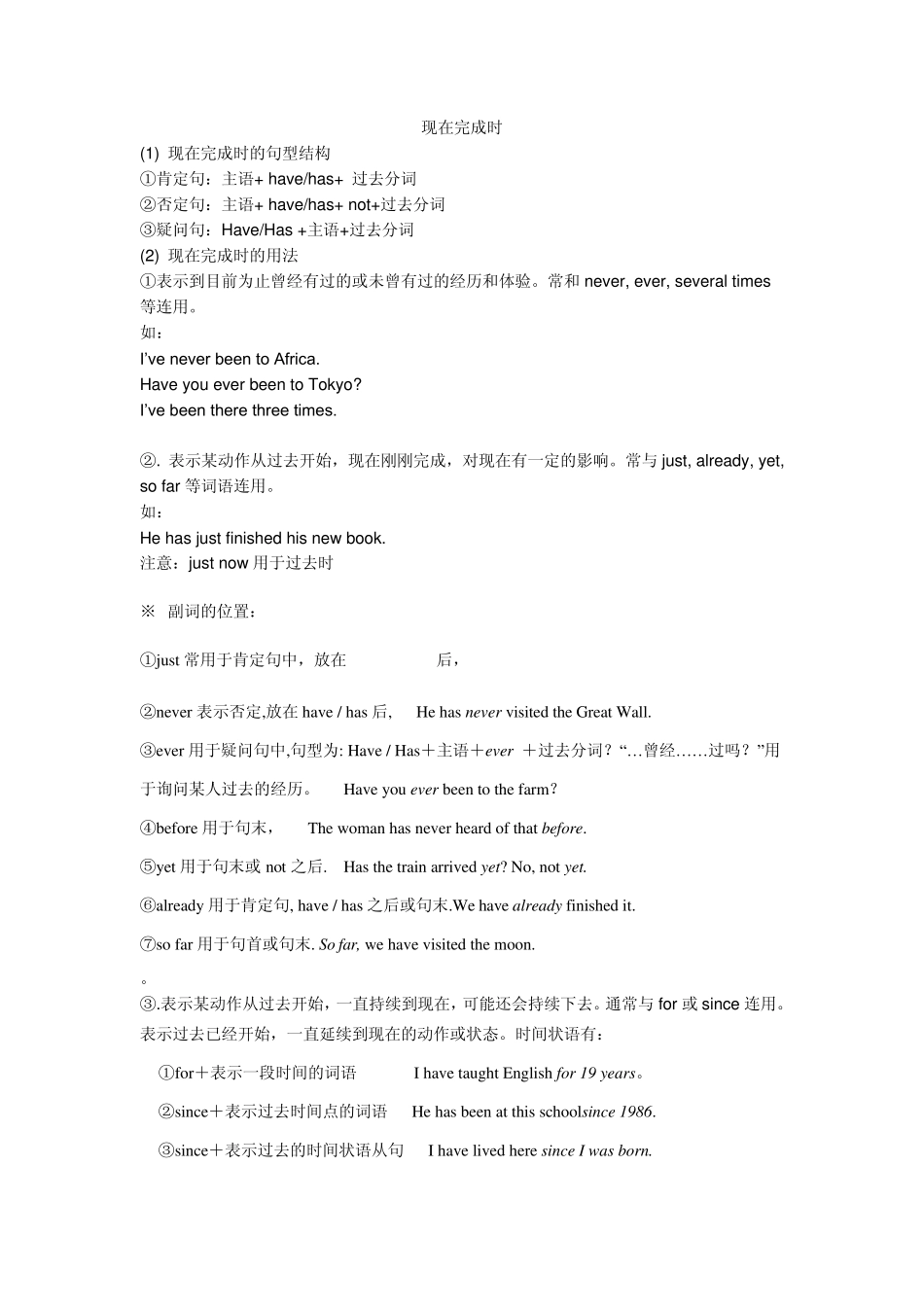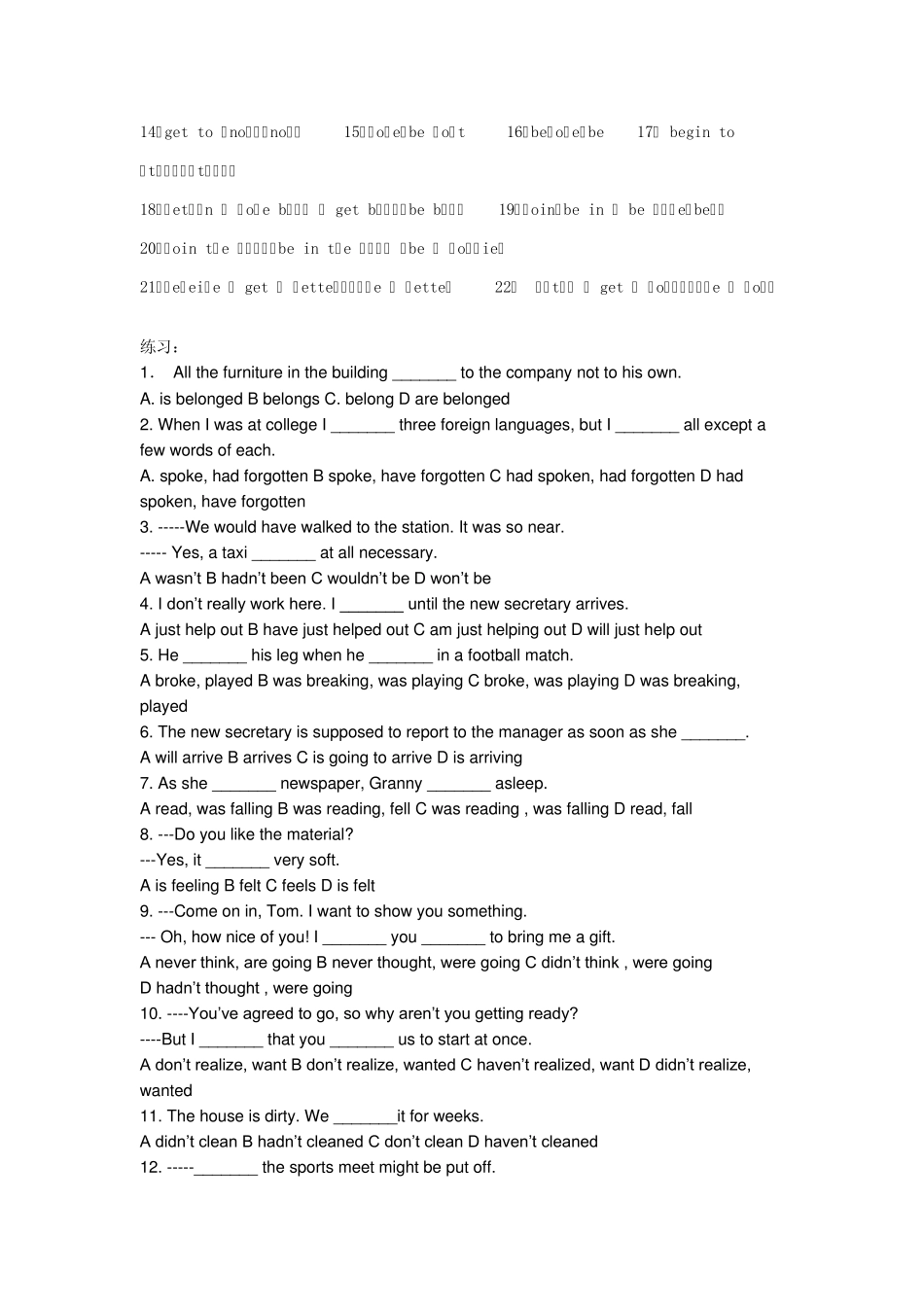现在完成时 (1) 现在完成时的句型结构 ①肯定句:主语+ have/has+ 过去分词 ②否定句:主语+ have/has+ not+过去分词 ③疑问句:Have/Has +主语+过去分词 (2) 现在完成时的用法 ①表示到目前为止曾经有过的或未曾有过的经历和体验。常和never, ever, several times等连用。 如: I’ve never been to Africa. Have you ever been to Tokyo? I’ve been there three times. ②. 表示某动作从过去开始,现在刚刚完成,对现在有一定的影响。常与just, already, yet, so far 等词语连用。 如: He has just finished his new book. 注意:just now 用于过去时 ※ 副词的位置: ①just 常用于肯定句中,放在have / has后,He has just come . ②never 表示否定,放在have / has 后, He has never visited the Great Wall. ③ever 用于疑问句中,句型为: Have / Has+主语+ever +过去分词?“…曾经……过吗?”用于询问某人过去的经历。 Have you ever been to the farm? ④before 用于句末, The woman has never heard of that before. ⑤yet 用于句末或not 之后. Has the train arrived yet? No, not yet. ⑥already用于肯定句, have / has 之后或句末.We have already finished it. ⑦so far 用于句首或句末. So far, we have visited the moon. 。 ③.表示某动作从过去开始,一直持续到现在,可能还会持续下去。通常与for 或since 连用。 表示过去已经开始,一直延续到现在的动作或状态。时间状语有: ①for+表示一段时间的词语 I have taught English for 19 years。 ②since+表示过去时间点的词语 He has been at this schoolsince 1986. ③since+表示过去的时间状语从句 I have lived here since I was born. ④since+一段时间+ago. I have known him since 20 years ago. 注意:for+一段时间,since 后接一个过去的时间点或一般过去时的句子。 ④ 在表将来的时间状语和条件状语从句中代替将来完成时。 如: You can go home when you have finished your work. 比较:You can go home when you finish your work. (3) 过去分词的构成 ① 一般情况下在动词词尾后直接加-ed。如:listen-listened, talk-talked ② 以不发音的字母...


